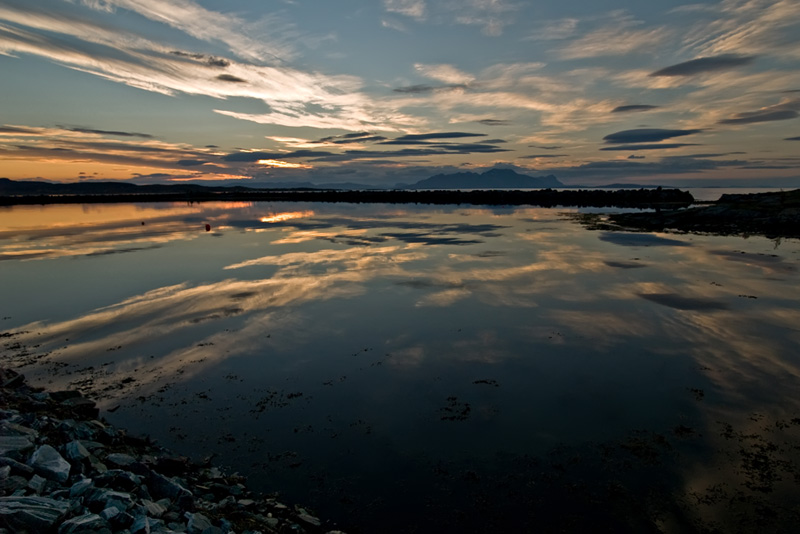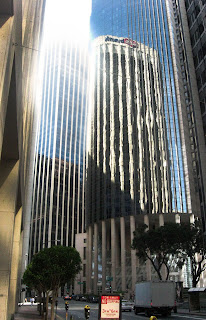Every year, 5,000 people under the age of 21 die as a result of underage drinking. About 1,900 of these deaths are from car crashes, 1,600 from homicides, 300 from suicide, and hundreds from other injuries such as falls, burns, and drowning. The age of underage drinking has been getting lower over the years; in 1965, the average age of first use of alcohol was around 18, now it is 14. A study from 2005 by Monitoring the Future shows that every two in five eighth graders has consumed alcohol. Studies also show that young people who drink heavily are at high risk for health problems, especially in the brain and liver, as well as problems with bodily growth. People who drink underage are more likely to fall victim to violent crimes and sexual assault, and have serious school and social problems. It only takes one drink. Call 888-655-7263 for help or visit savealifetour.com more information on underage drinking.
Thursday, April 28, 2011
Thursday, March 17, 2011
Warhol
Andy Warhol
· Real name is Andrew Warhola (8/6/28-2/22/87) (Became Warhol after a misprint)
o Born in Pittsburgh, PA, Parents from Czechoslovakia (does not exist anymore)
o Father worked in a coal mine
· In High School, kicked out of art club because he was “too good”
· Graduated from the Carnegie Institute of Technology (Bachelor of Fine Arts)
· Graduated with degree for pictorial design & wanted to become a commercial illustrator
· Designed advertisements for women’s shoes
· Used Polaroid camera
· Fear of hospitals and doctors, hypochondriac
· Favorite print making technique was silk screening
· Friends & family described him as a workaholic
· His sexuality was speculated upon and how this influenced his relationship to art is “a major subject of scholarship on the artist”
· First solo expedition in 1952
· Coined the term “15 minutes of fame”
· 1960s: iconic American products (pop art)
· Created The Factory, his NYC studio from 1962-1968
· Celebrity portraits developed into one of the most important aspects of his career
· Made films (first one called Sleep – 6 hours of a man sleeping) (1963)
· 1965 said he was retiring from painting
o 1972 returned to painting
· Designed cover for the Rolling Stones’ album Sticky Fingers (cover made out of real jean material)
· Produced Velvet Underground’s first album
· Started a magazine called Interview, worked for Glamour Magazine, Vogue
· Shot by Valerie Solanas 3 times for being abusive and “too controlling” (6/3/68)
o Solanas authored the S.C.U.M. Manifesto, a separatist feminist document
o "Before I was shot, I always thought that I was more half-there than all-there – I always suspected that I was watching TV instead of living life. People sometimes say that the way things happen in movies is unreal, but actually it's the way things happen in life that's unreal. The movies make emotions look so strong and real, whereas when things really do happen to you, it's like watching television – you don't feel anything. Right when I was being shot and ever since, I knew that I was watching television. The channels switch, but it's all television."
· Marilyn Monroe = favorite model (not painted until after death)
· Wore silver wigs until he dyed his hair silver
· Practicing Ruthenian Rite Catholic who described himself as a religious person
· Died of a heart attack brought on by a gall bladder surgery and water intoxication
· $100,000,000 for one of his paintings (highest amount paid) (“Eight Elvises”)
· Referred to as the “Prince of Pop”
Tuesday, March 15, 2011
Photoshopped Photo for Portfolio
For this assignment, we were to pick a photograph, or multiple photographs, and use a few different effects in photoshop to create a new photo. These photoshopped photos show our abilities to utilize all of the elements of photoshop. I chose four different photos to mess around with in photoshop. I guess you could say this photo is in honor of my friend Elizabeth, because the three of the four photos are of her!
The first photo that I used was one that I did not take, but I am actually in the photo; it was taken at a show I went to, and it was taken by photographer Dirk Mai. It is the black and white photo of the crowd in the background of the photo. The first thing I did with the photo of the crowd, which was originally in color, was I simply desaturated it. After I desaturated it, I decided I didn’t like how the picture looked as just black and white, so I started to try all of the filters to see which I liked best and thought would look the best with the photo I was attempting to create. I decided to use the poster edge filter, and I changed the edge thickness level to 1, the intensity level to 2, and the posturization level to 1. I then took my first picture of Elizabeth (the one on the right) that I took one day when we were at the beach, and I took it while she was throwing sand in the air, hence why she is jumping up like that. The first thing I did with this picture was to capture only Elizabeth’s body with the magnetic lasso tool. Then, I copied and pasted her into the photo of the crowd, and used the free transform tool so she would fit into the crowd and so she wouldn’t look like a giant! I then thresholded the image, using about 10 layers and changing the color I used for every layer. After I finished with the first picture of Elizabeth, I started to work on the other two pictures of her. They are both very similar and were taken at the same time, except that in the picture that is dominant in the front, she is taking a picture so her camera is shown in the photo. I blended the less dominant photo into the background first and used the lighten filter to blend it with an opacity of 30. I then blended the picture of her with the camera into the photo using the same filter but with an opacity of 60, so it would stand out more than the picture in the background.
I really like how this photoshopped image came out. I debated with myself over and over again while trying to decide what images to use. I pretty much winged this photo as I went along; I had chosen the crowd picture first, and then decided what to do from there. I hadn’t planned out any of the photo before I started, but I am very pleased with the outcome!
Friday, February 25, 2011
Wednesday, February 2, 2011
Tuesday, January 25, 2011
Architecture Assignment
location 1
Big Picture
somewhere in San Francisco (I can't remember where right now, I will put it up later)
location 2
Detail
a light fixture at Starbucks in Pacifica
location3
Big Picture
All Souls church in South San Francisco
location3
Detail
The baptismal fountain at
All Souls church in South San Francisco
location3
Interior
baptismal fountain and stanglass windowas at
All Souls church in South San Francisco
Saturday, January 22, 2011
notes pgs 202-217
- most landscape shots focus on the natural world without the presence of humans
- tends to be more formal for that reason
Landmarks in Landscape Photography
- before photography- tradition of painting landscapes
- first photographers looked at paintings for inspiration- landscapes
Photographing the Landscape
-composition
- 1 to 2 inches in any direction can make a difference
- explore the variations when taking a shot (move in different directions)
- value- very important in black&white photography
- wide range of tones- more dramatic
- narrower range- more contemplative
- achieve balance between unity and variety
- leaning towards unity- more peacful
- " variety- more energetic



Camera Settings
- maximize depth of field
- stop down a lense as far as it will go
-medium format cameras
- f/16, f/22, or even f/32
- large format cameras
- f/64
- longer shutter speeds
Light
-"golden times"
- just after sunrise
- just before sunset
- grand landscape photographs- direct lighting creates the highlights and shadows that make a landscape seem 3-D
- for closer shots of trees and forests, direct sunlight creates highlights & shadows that have no detail
- for closer views- most photographers choose overcast days that reduce the highlights and shadows


Film
- 100 ISO film with 35mm cameras
- sometims color can overpower other elements
Lenses
- wide-angle lenses
- allow you to include close & distant objects in the same shot
- greater sense of depth
- telephoto lenses
- for concentrating on details or areas in the distance
- macro lenses
- very helpful for abstract images


Filters
- yellow filter- bring out clouds
- red filter- black skies & dark white clouds
- red filter with polarizer- ultimate black & max contrast

photo taken with yellow filter
Camera Support
- slow film & small f-stops = need a tripod
The Great Landscape
- the big view
- wide-angle lens
Landscape Details & Close-ups
- direct sun in wooded areas can make shooting more diccicult
- "quiet light" - overcast
Abstracted Elements in the Landscape
- elements composed of line, shape, values & textures
- telephoto or macro lenses work best
- depth of field
- stop lens down as far as it will go

- tends to be more formal for that reason
Landmarks in Landscape Photography
- before photography- tradition of painting landscapes
- first photographers looked at paintings for inspiration- landscapes
Photographing the Landscape
-composition
- 1 to 2 inches in any direction can make a difference
- explore the variations when taking a shot (move in different directions)
- value- very important in black&white photography
- wide range of tones- more dramatic
- narrower range- more contemplative
- achieve balance between unity and variety
- leaning towards unity- more peacful
- " variety- more energetic



Camera Settings
- maximize depth of field
- stop down a lense as far as it will go
-medium format cameras
- f/16, f/22, or even f/32
- large format cameras
- f/64
- longer shutter speeds
Light
-"golden times"
- just after sunrise
- just before sunset
- grand landscape photographs- direct lighting creates the highlights and shadows that make a landscape seem 3-D
- for closer shots of trees and forests, direct sunlight creates highlights & shadows that have no detail
- for closer views- most photographers choose overcast days that reduce the highlights and shadows

Film
- 100 ISO film with 35mm cameras
- sometims color can overpower other elements
Lenses
- wide-angle lenses
- allow you to include close & distant objects in the same shot
- greater sense of depth
- telephoto lenses
- for concentrating on details or areas in the distance
- macro lenses
- very helpful for abstract images


Filters
- yellow filter- bring out clouds
- red filter- black skies & dark white clouds
- red filter with polarizer- ultimate black & max contrast

photo taken with yellow filter
Camera Support
- slow film & small f-stops = need a tripod
The Great Landscape
- the big view
- wide-angle lens
Landscape Details & Close-ups
- direct sun in wooded areas can make shooting more diccicult
- "quiet light" - overcast
Abstracted Elements in the Landscape
- elements composed of line, shape, values & textures
- telephoto or macro lenses work best
- depth of field
- stop lens down as far as it will go

Subscribe to:
Comments (Atom)

























